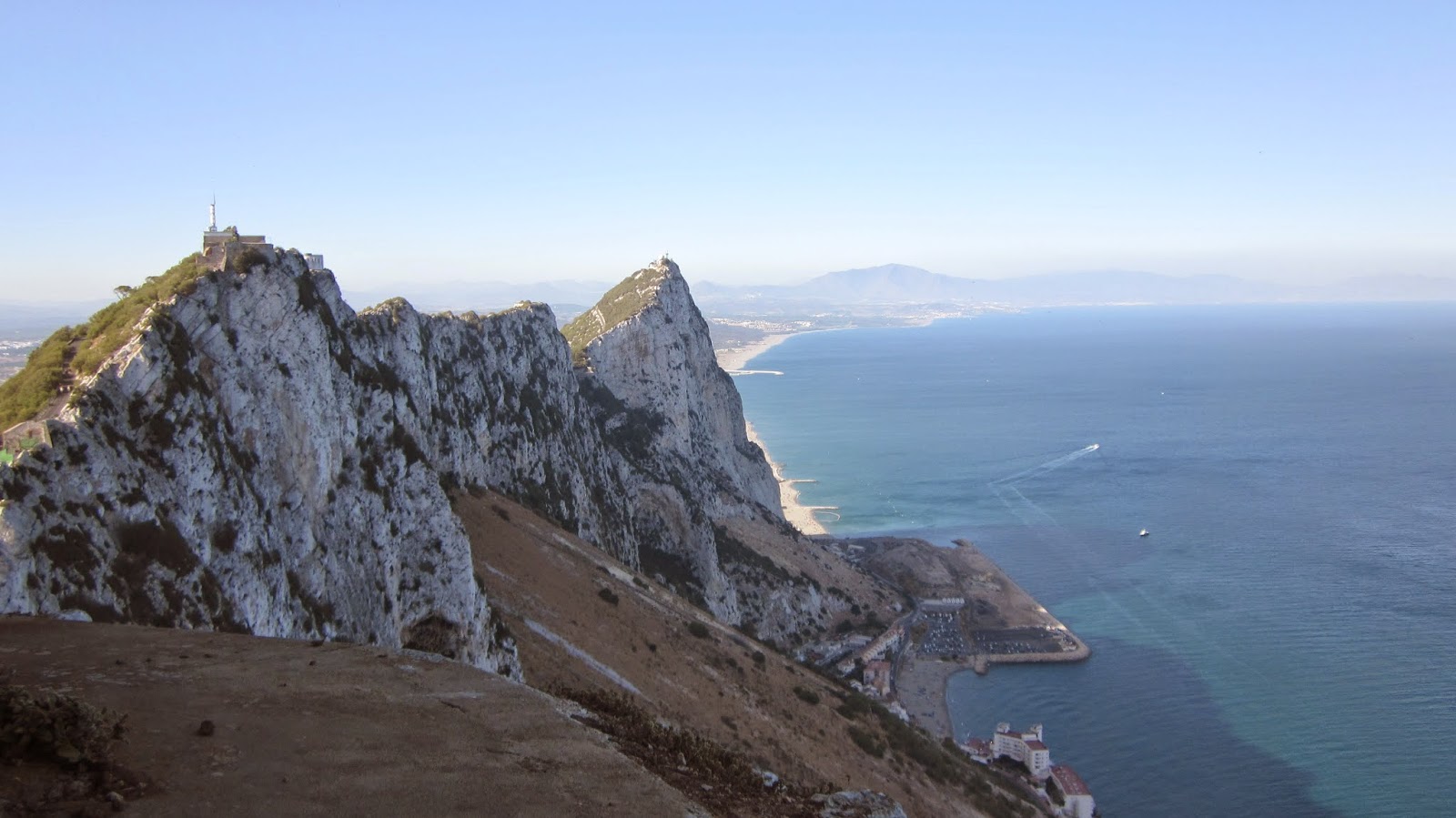
The Living Daylights starts off in Gibraltar, where the 00-section has been chosen to participate in a NATO exercise with the S.A.S. Three 00-agents are supposed to infiltrate the radar installations of Gibraltar. At the same time, a Soviet operation is going on called Smiert Spionam, with the objective to kill a 00-agent. The exercise begins with three 00-agents parachuting down on the rock from a Hercules aircraft.
The three agents actually eject their parachutes after passing the north point as they continue down the steep mountain. The city and the harbour, visible to the right of the rock, is located in western Gibraltar. The view over the north point (from the south side) is also seen in the picture below.
One of the three agents is seen steering his parachute down on the east side, landing right above the water catchment, which used to collect rain water that supplied Gibraltar for decades. This large water catchment was dismantled between 2001 and 2006. The slope on which they sat is the "Great Gibraltar Sand Dune", an ancient consolidated sand dune which dominates the east side of the Rock of Gibraltar.
 |
| The sand dunes that used to hold the water catchment |
 |
| The first agent landing on the east side of the rock |
 |
| The third agent landing on the west side, facing the city |
 |
| The north point seen from Spain, above which the three agents eject their parachutes |
 Gibraltar is a magnificent and surreal experience. This tiny part of the United Kingdom, actually a British Overseas Territory, is enthroned right by the entrance to the Mediterranean Sea, and the mighty rock with its two points that rises from the sea watches over both the Mediterranean as well as Africa. The main city, spreading out on the west side is probably more British than London itself with red phone booths and police officers from the Royal Gibraltar Police have British police uniforms. There is no cultural connection to Spain whatsoever, and hence the food in Gibraltar is just as bad as in England. Do not expect to find any Spanish delicacies in the restaurants.
Gibraltar is a magnificent and surreal experience. This tiny part of the United Kingdom, actually a British Overseas Territory, is enthroned right by the entrance to the Mediterranean Sea, and the mighty rock with its two points that rises from the sea watches over both the Mediterranean as well as Africa. The main city, spreading out on the west side is probably more British than London itself with red phone booths and police officers from the Royal Gibraltar Police have British police uniforms. There is no cultural connection to Spain whatsoever, and hence the food in Gibraltar is just as bad as in England. Do not expect to find any Spanish delicacies in the restaurants. I visited Gibraltar in September, which probably is one of the better months to visit the Rock, since there are less tourists and the climate is much nicer than during the too hot summer months. Avoid June-August for your life. Since you want to do a lot of walking around on the rock and in the city, the temperature should ideally not be above 25-28 degrees.
Gibraltar was captured from Spain in 1704 by an Anglo-Dutch force. The territory was subsequently ceded to Britain "in perpetuity" under the Treaty of Utrecht in 1713. During World War II it was an important base for the Royal Navy as it controlled the entrance and exit to the Mediterranean. The Straight of Gibraltar is only 13 km wide at this point.









No comments:
Post a Comment